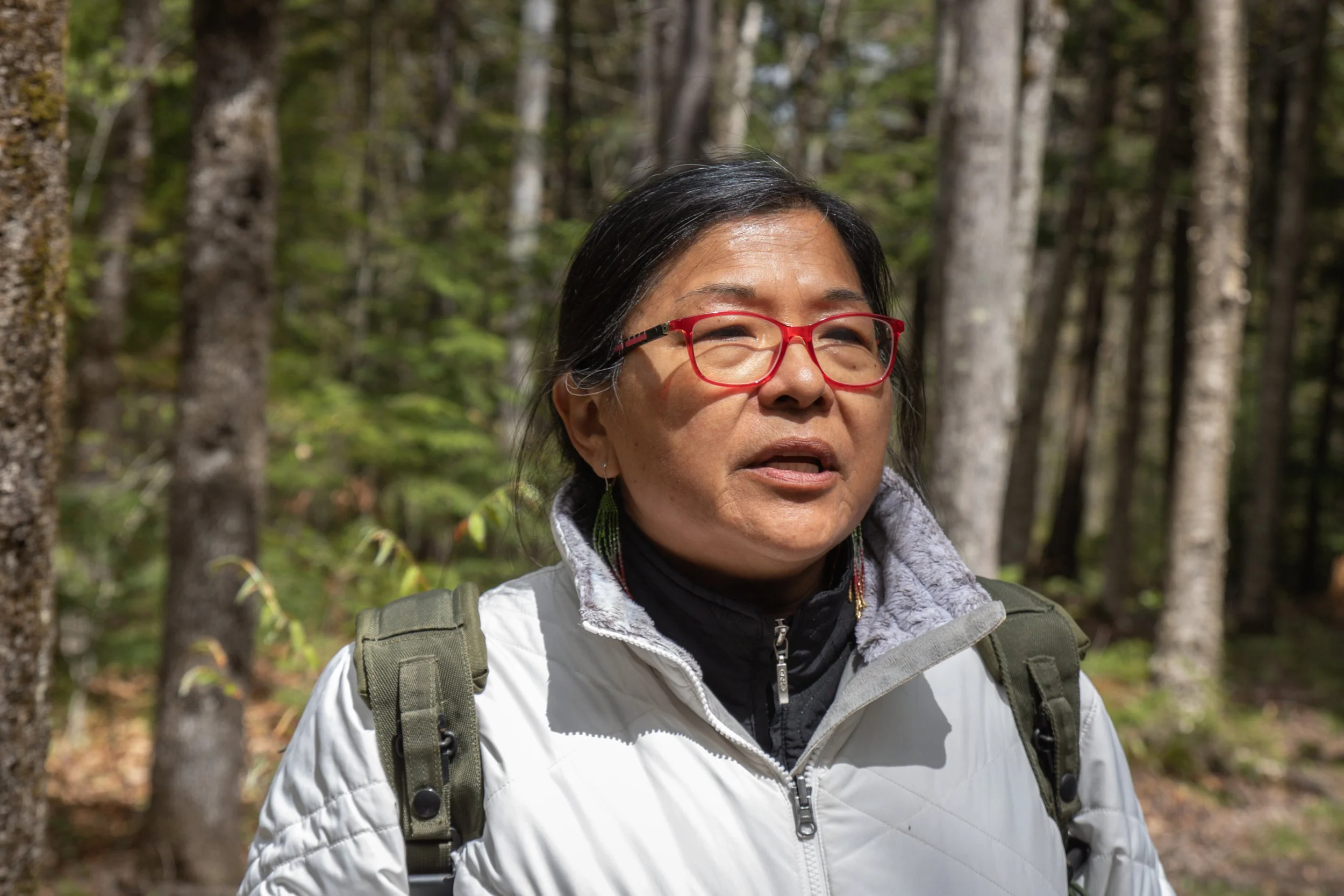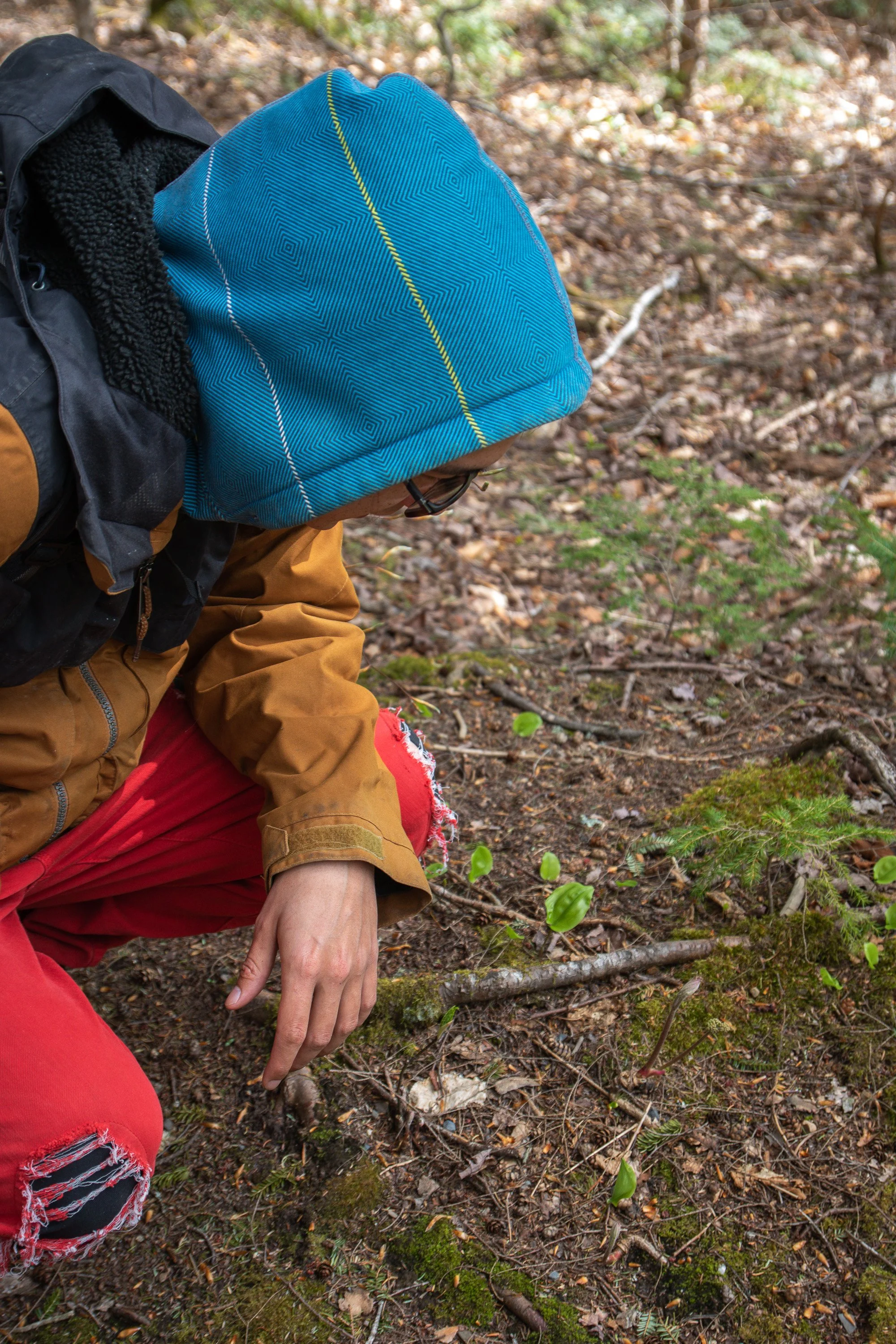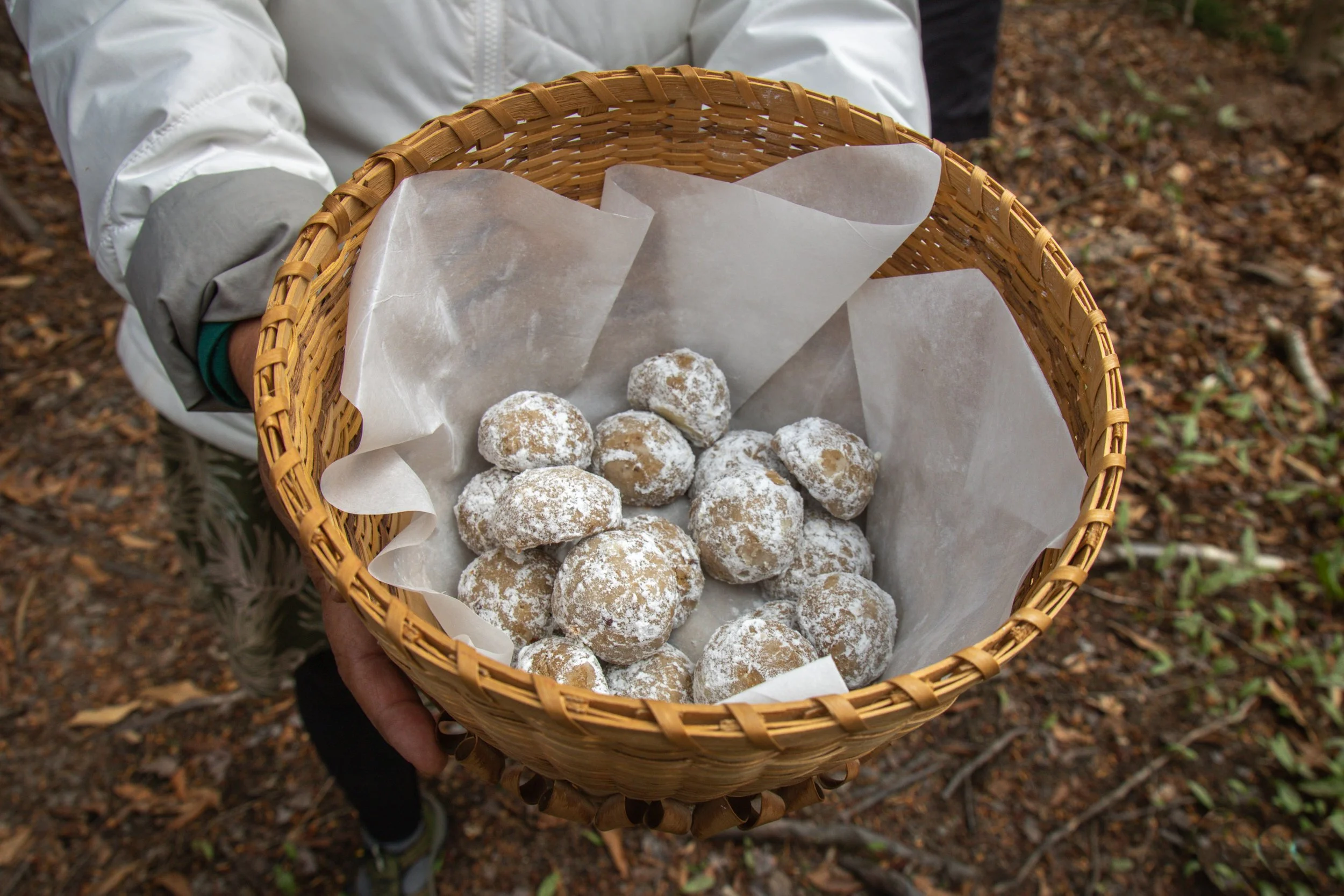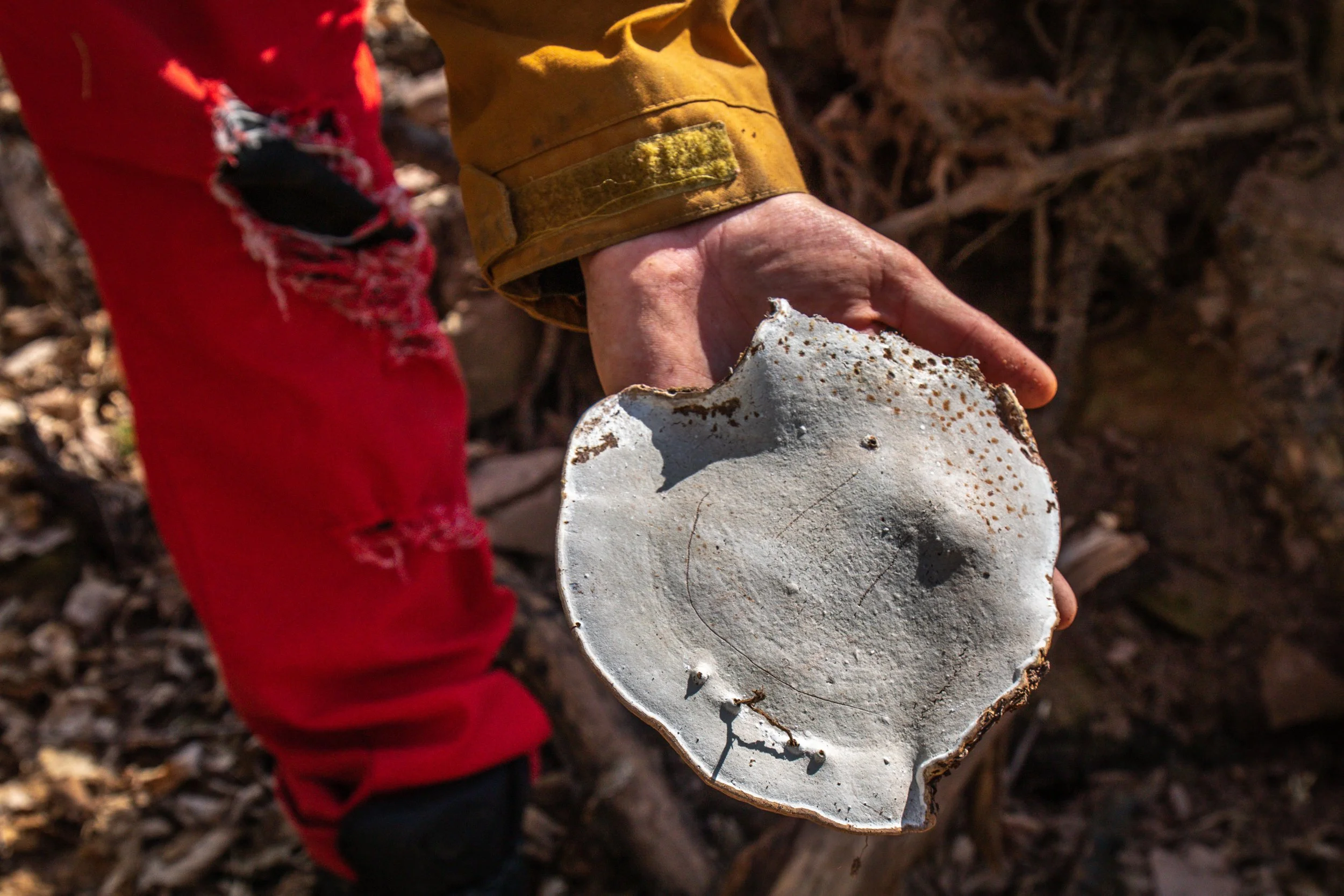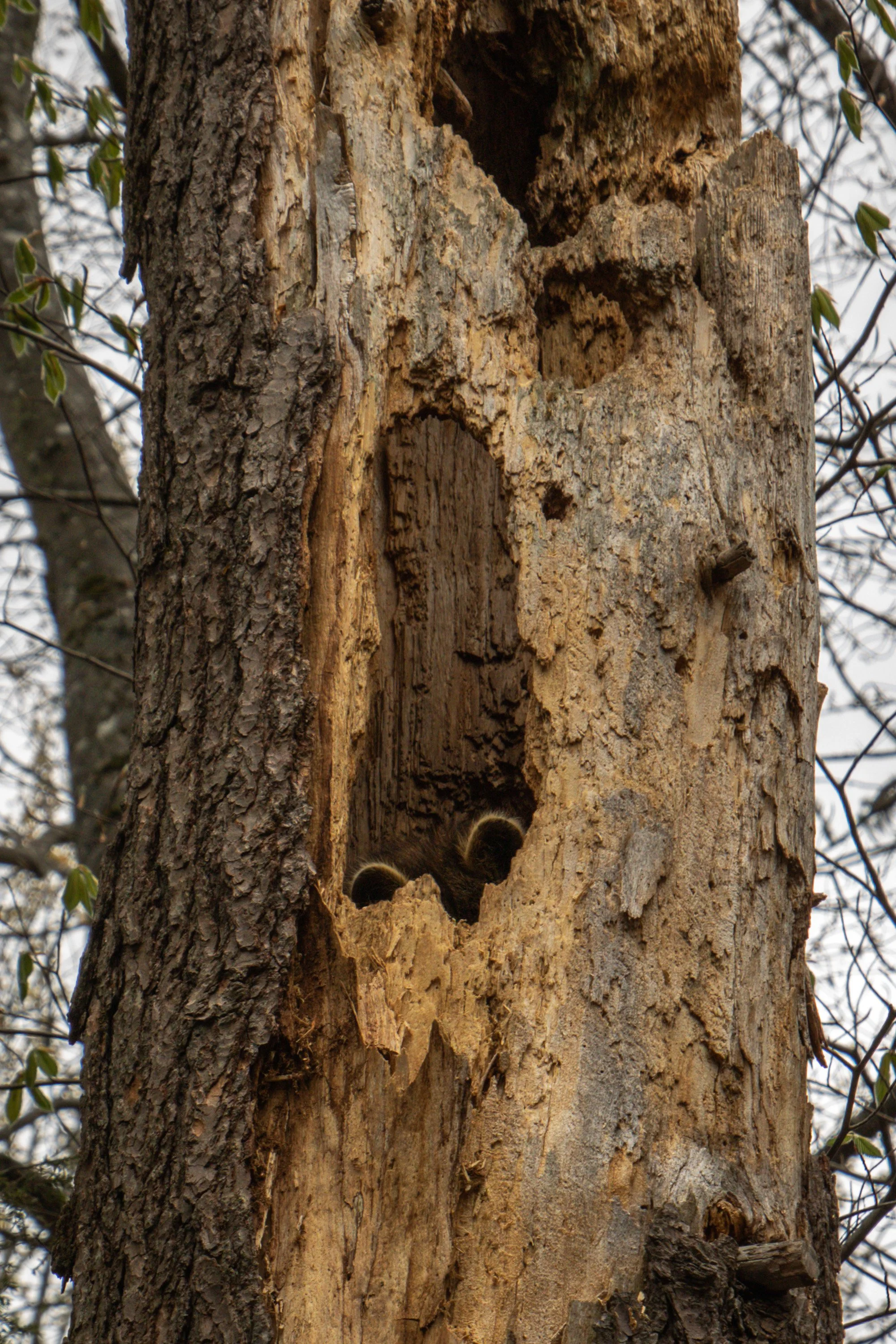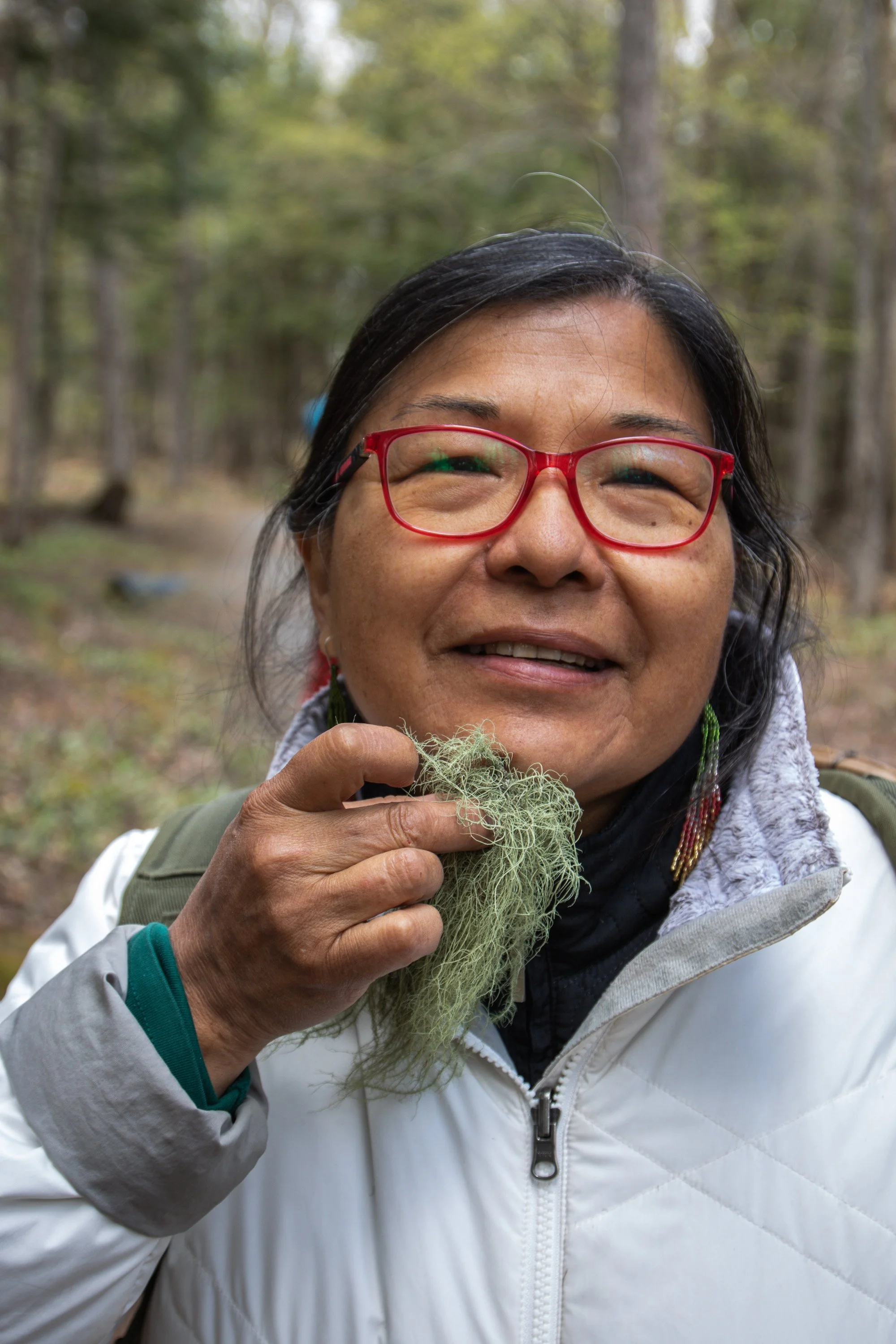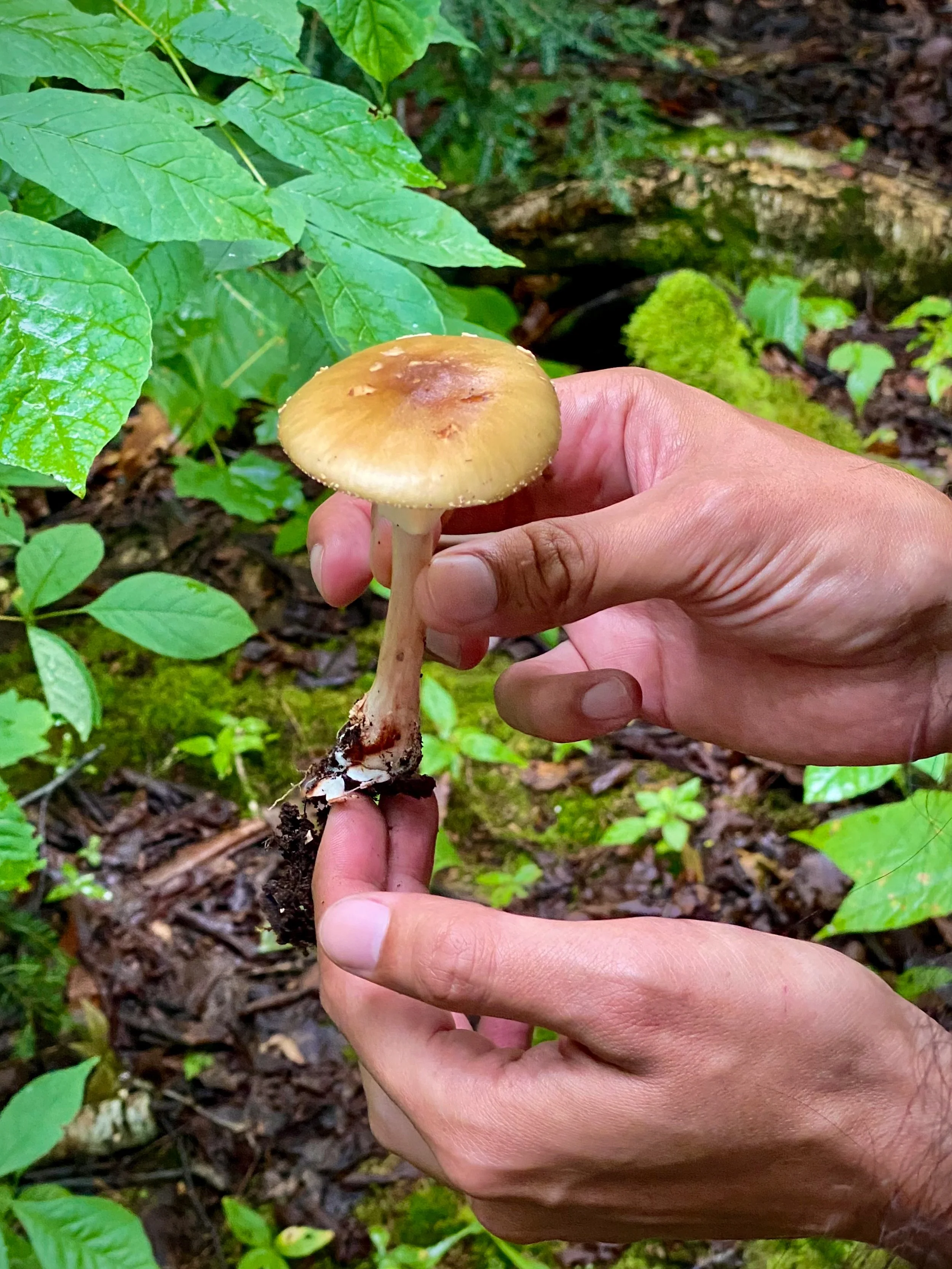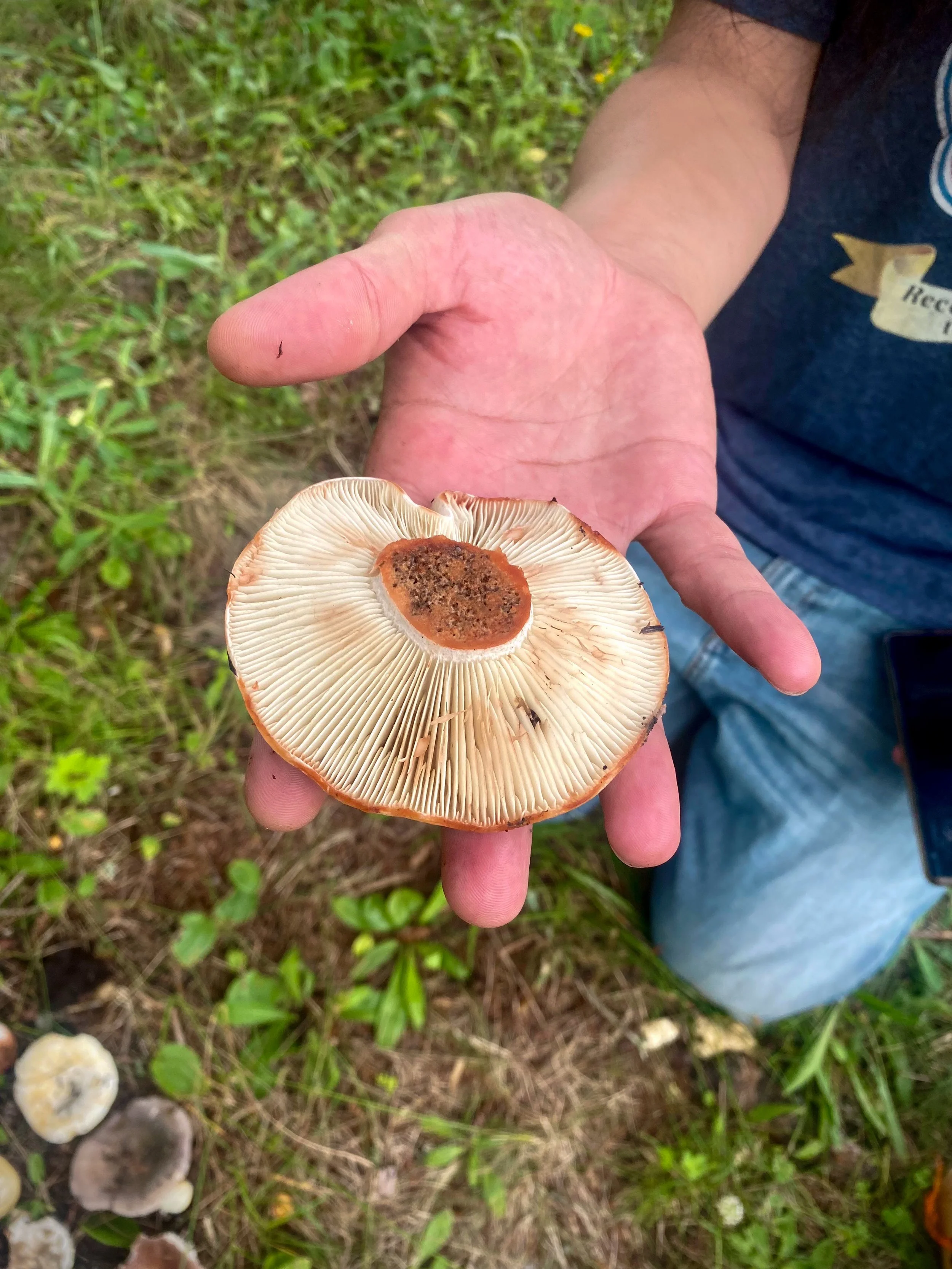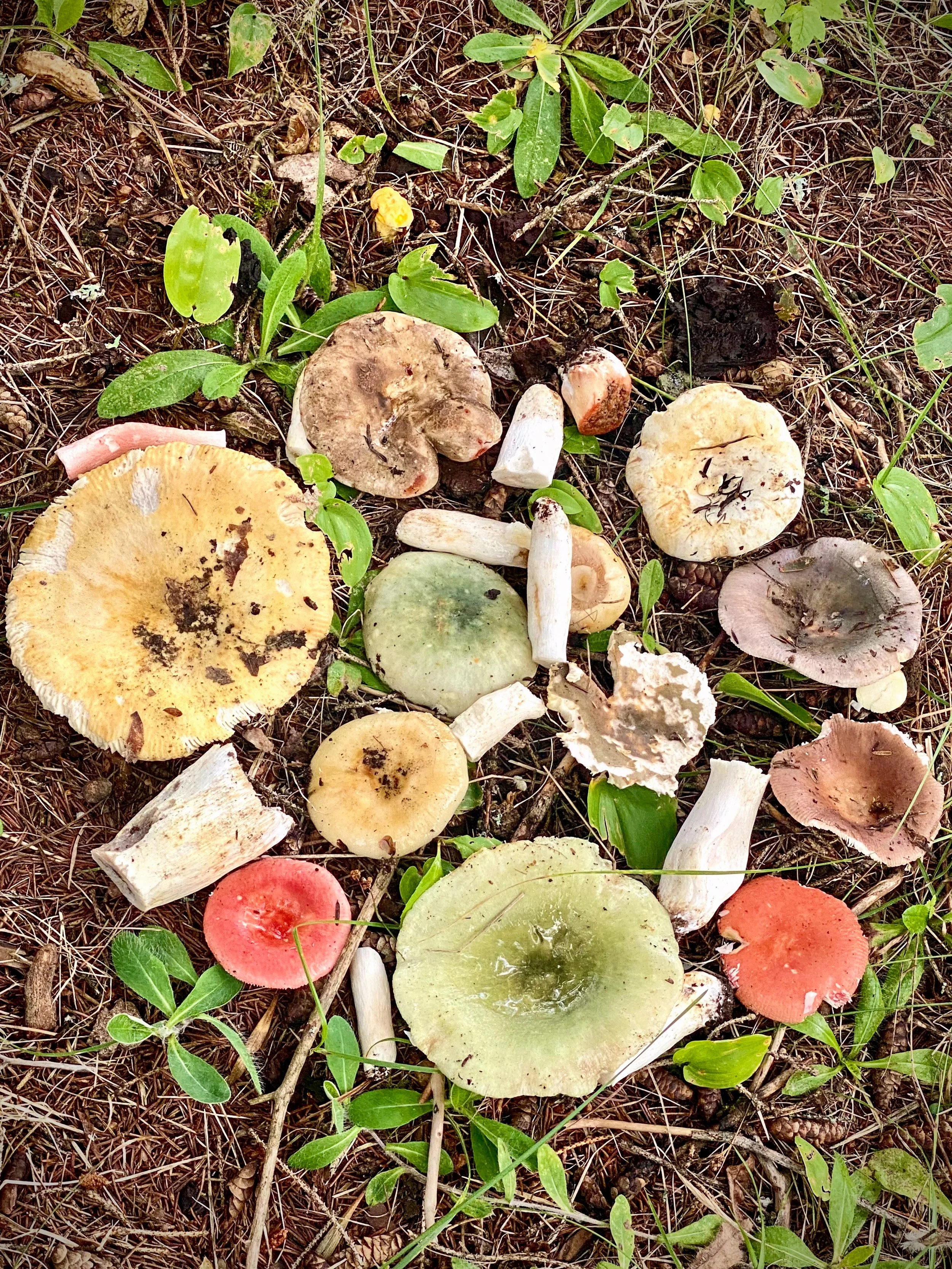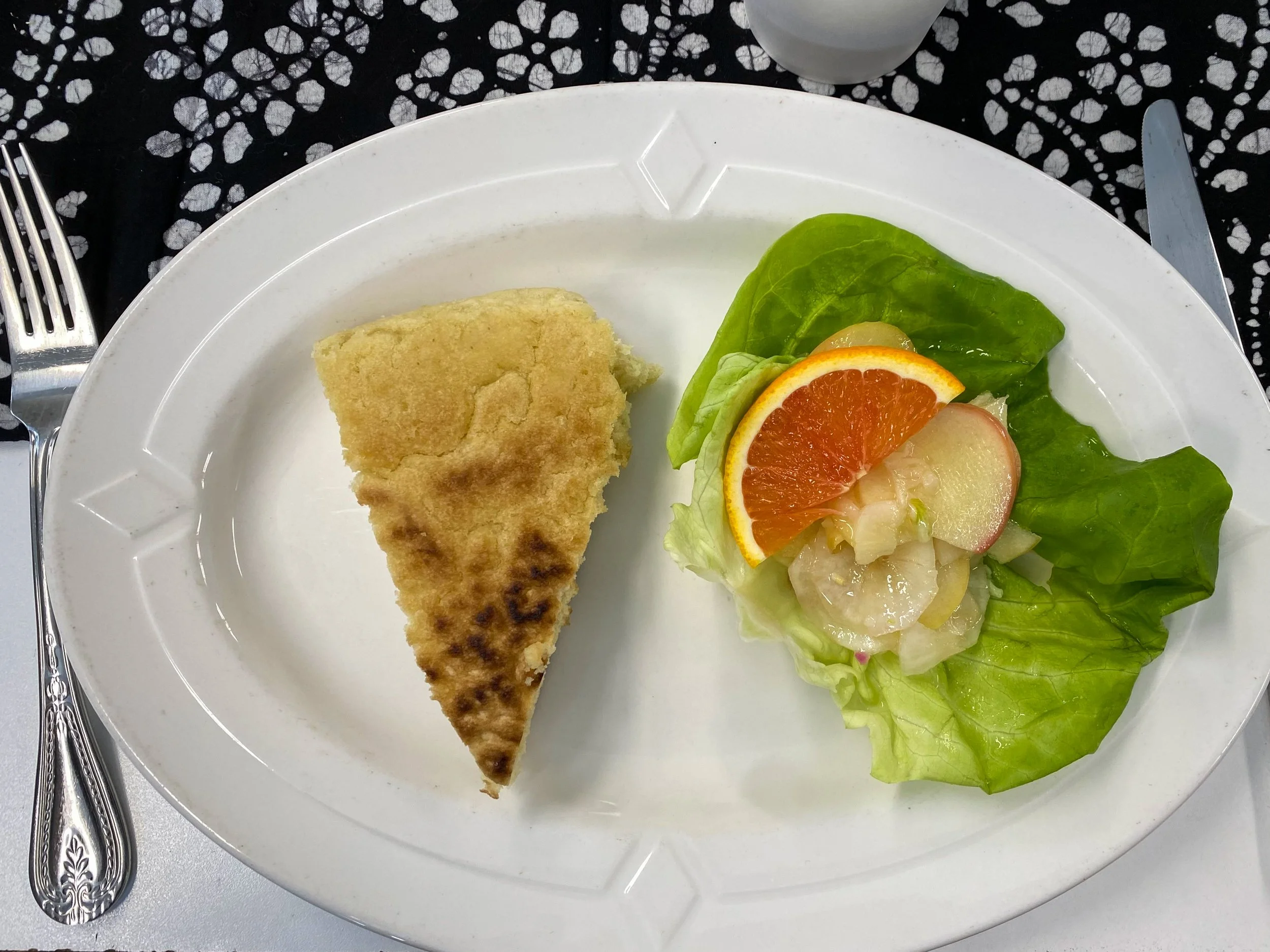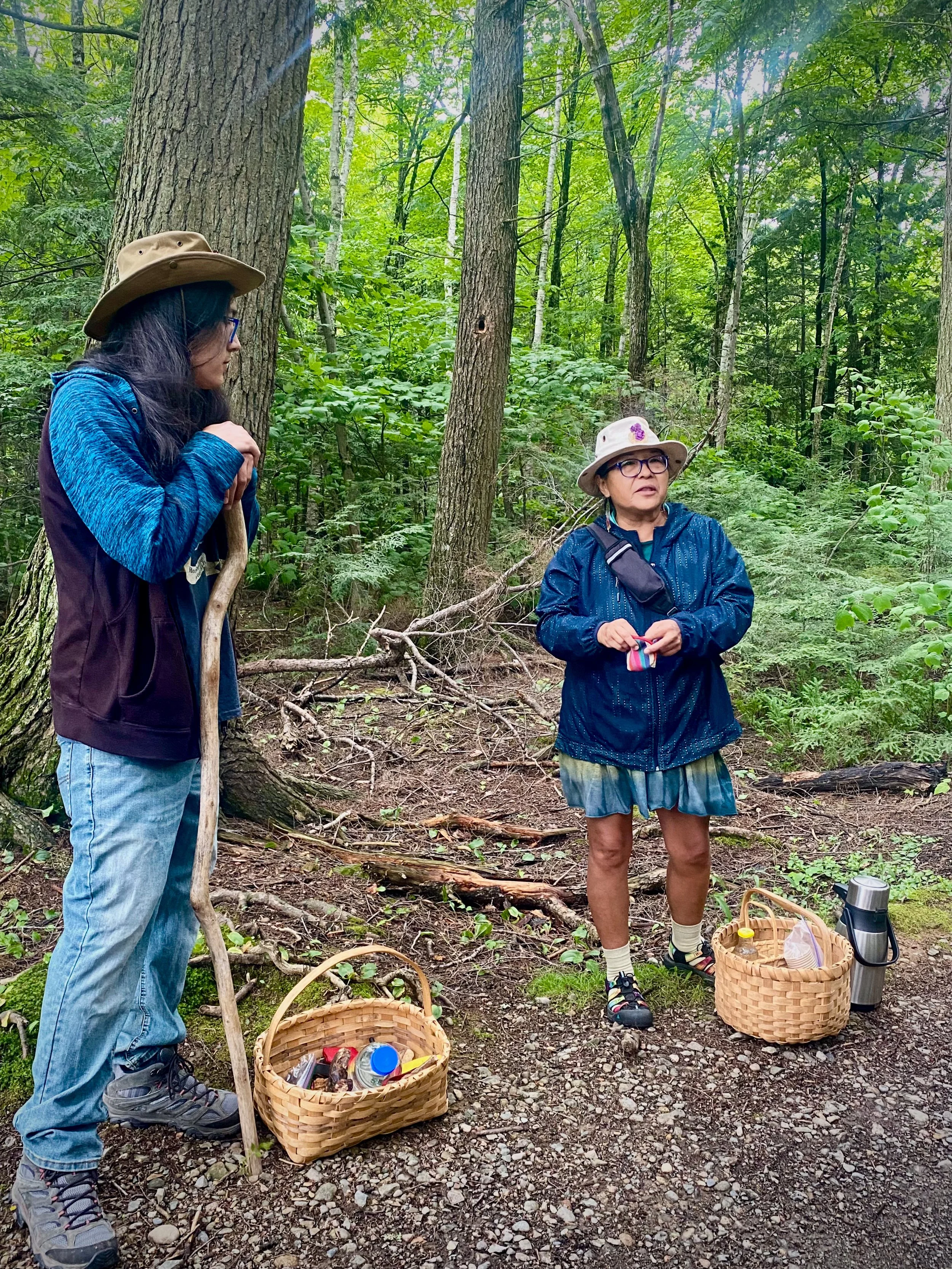The Wabanaki Tree Spirit Medicine Walk
A Walk That Awakens
I signed up for the Wabanaki Tree Spirit Medicine Walk in Fredericton’s Odell Park thinking it would be a peaceful stroll with some cultural insights. What I didn’t expect was a deep awakening—a shift. A call to better understand and connect with Indigenous people, culture, and ways of knowing. This walk, I soon realized, would be more than educational. It was healing. It was spiritual. It was, in every sense of the word, medicine.
Gathering in the Woods
Our small group, teachers, a cookbook author, an urban gardener, and I, gathered at the southern entrance to Odell Park, off Prospect Street. Most of us didn’t know one another, but there was an easy camaraderie. We had all signed up out of curiosity, and maybe even a quiet longing to reconnect: with nature, community, or something deeper we couldn’t yet name.
Soon, we were joined by Cecelia Brooks and her son, Anthony, co-owners of Wabanaki Tree Spirit. They arrived without fanfare, Cecelia with a warm smile, Anthony carrying an Wabanaki fiddlehead basket, a backpack, and a thermal urn. His jeans were torn at the knees, revealing dark leggings underneath. His hoodie was up. I admit I made assumptions. But Anthony would soon prove himself to be one of the most grounded, knowledgeable guides I’ve ever encountered.
Kwey. Woliwon.
Cheryl, a fellow retired teacher and the organizer of this outing, stepped forward and greeted Cecelia in her traditional language with “Kwey,” followed by “Woliwon.” I assumed it meant “Hello” and “Thank you,” and I was mostly right. But later learned that “kwey” also honours the light in others, “My shine comes from your shine.”
That sentiment lingered throughout the walk. As we moved beneath the towering hemlocks, we began to see each other differently, not as strangers or tourists, but as equals. As learners. As part of the land, not just visitors to it.
An Offering of Thanks
Early in the walk, Anthony paused beside a patch of forest floor and pointed something out to Cecelia. She nodded, reached into a small pouch, and asked each of us to hold out our hands. Into our palms, she placed a pinch of tobacco. She explained that before we take anything from the Earth, we must first offer our thanks. Whether gently dropped to the ground or released into the wind, the act of giving tobacco is a sacred gesture of gratitude. We followed her lead, grounding ourselves in humility and respect.
And just like that, it wasn’t a walk anymore. It was a ceremony.
Walking Among Ancestors
Odell Park is no ordinary city park. It’s one of the largest stands of old-growth forest in Atlantic Canada. Some of the hemlocks here are over 400 years old. You can feel the weight of time beneath your feet. Light filters through the canopy like stained glass in a cathedral. Cecelia told us this land was once foraged by her ancestors long before European settlers arrived. In 1783, it was granted to Loyalist Jonathan Odell, passed down through generations, and finally acquired by the City of Fredericton in 1940. Now recognized as traditional Wolastoqey land, the park has become a place for both ecological preservation and cultural reconnection. Through partnerships with St. Mary’s First Nation, initiatives like the Take It Outside program and the Wabanaki Tree Spirit Tours are fostering healing, education, and reconciliation, one story, one walk, one child at a time.
Food is Medicine and Medicine is Food
As we walked, Cecelia and Anthony introduced us to forest friends: Trout Lily, Blue Beaded Lily, and several conifers. We learned to look closely, taste carefully, and, importantly, not to forage directly next to the path. (Cecelia shared the tip with a smile and a nod to dogs and their habits.) Cecelia and Anthony teach using a “two-eyed seeing” approach, blending Indigenous wisdom with Western science. We sipped Balsam Fir tea, naturally rich in vitamin C, and nibbled on acorn shortbread made from low-tannin Bur Oak acorns.
“Food is medicine and medicine is food,” Cecelia reminded us. Every plant, every tree, has a purpose. But you must know what you’re looking at. She held up two nearly identical leaves, one edible, one poisonous. The difference could be life or death. We weren’t just learning what was safe to eat. We were being taught how to see again.
A Living Story
Every plant had a story, and Cecelia is a gifted storyteller. She told us how conifer tea saved Jacques Cartier’s scurvy-stricken crew thanks to the knowledge of local Indigenous people. She shared traditions, teachings, and connections that made the forest feel alive. Anthony, too, brought a quiet wisdom. His work installing and maintaining the new Wabanaki Healing Garden at the Fredericton Botanic Garden is a testament to his commitment to sharing knowledge and nurturing the land. These stories aren’t static, they’re living legacies. And by walking, listening, and staying open, we became part of that story, too.
Forest Bathing and Awakening
Midway through, something shifted. We moved slower. More intentionally. Our senses heightened. The Japanese call it shinrin-yoku, or forest bathing, immersion in nature as healing. But the practice is universal. We heard the drumming rhythm of pileated woodpeckers. A raccoon peeked from a hollow tree. A weasel darted past, fast and fleeting. This park, so familiar to many of us, suddenly felt transformed. We had jogged these trails, skied through them in winter, walked them on summer days. And yet, we had never seen the place like this before.
Dreaming Forward
One participant, an urban gardener, told me later that he saw in this walk the future of New Brunswick, eco-cultural tourism, Indigenous-led education, and healing. He imagined electric trains connecting communities to powwows and forest festivals. “Maybe it’s pie in the sky,” he said. But I don’t think it is. It starts with walks like this. With seeing differently. With listening deeply. The beauty of the Wabanaki Tree Spirit Medicine Walk is that it doesn’t end when the walk ends. Cecelia and Anthony encourage people to return, to keep learning, to walk again, in every season.
I returned a few weeks later to experience it once more. And again this past winter, as part of a media tour. Despite the snow and silence, the trees still had stories to share. That day ended with a warm Wabanaki meal: Sunchoke and apple salad, Skijinabon (a traditional survival bread), and a hearty Three Sisters chili, made with corn, beans, and squash, the sacred crops of the Wabanaki people. Each of us left with a seed packet. And a story to grow.
Woliwon Cecelia & Anthony
The Wabanaki Tree Spirit Medicine Walk is a gift, one of reverence, reconnection, and return. It teaches you to move slower. To listen deeper. To walk with humility and curiosity. I came for a walk. I left with medicine for my soul. Woliwon, Cecelia and Anthony. I’ll see you again.
To book your experience, email: wabanakitreespirit@gmail.com or call 506-461-6806.
All thoughts and opinions are my own. Follow Maritimes Maven on FaceBook, Instagram, Pinterest, LinkedIn & Threads. Subscribe to be the first to receive my latest articles. Share articles you love with your social media community so they, too, will discover, There’s No Place Like Home!

